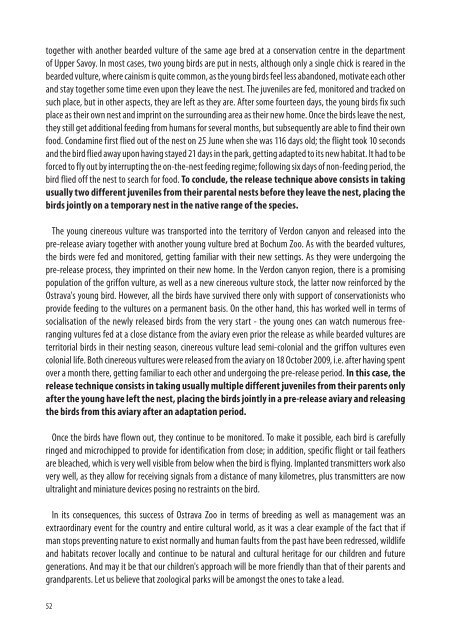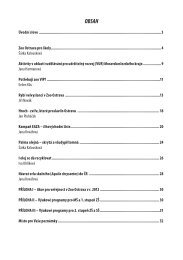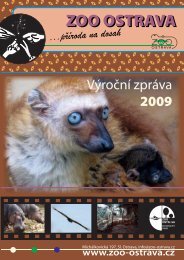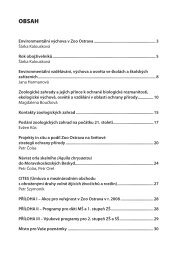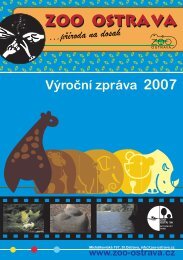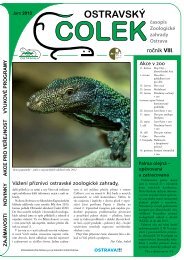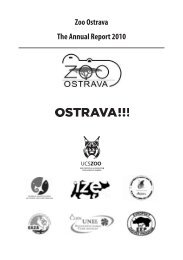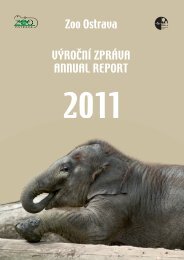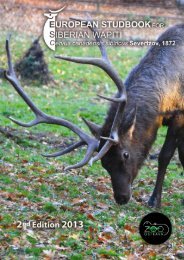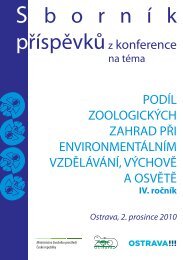Create successful ePaper yourself
Turn your PDF publications into a flip-book with our unique Google optimized e-Paper software.
together with another bearded vulture of the same age bred at a conservation centre in the department<br />
of Upper Savoy. In most cases, two young birds are put in nests, although only a single chick is reared in the<br />
bearded vulture, where cainism is quite common, as the young birds feel less abandoned, motivate each other<br />
and stay together some time even upon they leave the nest. <strong>The</strong> juveniles are fed, monitored and tracked on<br />
such place, but in other aspects, they are left as they are. After some fourteen days, the young birds fix such<br />
place as their own nest and imprint on the surrounding area as their new home. Once the birds leave the nest,<br />
they still get additional feeding from humans for several months, but subsequently are able to find their own<br />
food. Condamine first flied out of the nest on 25 June when she was 116 days old; the flight took 10 seconds<br />
and the bird flied away upon having stayed 21 days in the park, getting adapted to its new habitat. It had to be<br />
forced to fly out by interrupting the on-the-nest feeding regime; following six days of non-feeding period, the<br />
bird flied off the nest to search for food. To conclude, the release technique above consists in taking<br />
usually two different juveniles from their parental nests before they leave the nest, placing the<br />
birds jointly on a temporary nest in the native range of the species.<br />
<strong>The</strong> young cinereous vulture was transported into the territory of Verdon canyon and released into the<br />
pre-release aviary together with another young vulture bred at Bochum <strong>Zoo</strong>. As with the bearded vultures,<br />
the birds were fed and monitored, getting familiar with their new settings. As they were undergoing the<br />
pre-release process, they imprinted on their new home. In the Verdon canyon region, there is a promising<br />
population of the griffon vulture, as well as a new cinereous vulture stock, the latter now reinforced by the<br />
<strong>Ostrava</strong>'s young bird. However, all the birds have survived there only with support of conservationists who<br />
provide feeding to the vultures on a permanent basis. On the other hand, this has worked well in terms of<br />
socialisation of the newly released birds from the very start - the young ones can watch numerous freeranging<br />
vultures fed at a close distance from the aviary even prior the release as while bearded vultures are<br />
territorial birds in their nesting season, cinereous vulture lead semi-colonial and the griffon vultures even<br />
colonial life. Both cinereous vultures were released from the aviary on 18 October <strong>2009</strong>, i.e. after having spent<br />
over a month there, getting familiar to each other and undergoing the pre-release period. In this case, the<br />
release technique consists in taking usually multiple different juveniles from their parents only<br />
after the young have left the nest, placing the birds jointly in a pre-release aviary and releasing<br />
the birds from this aviary after an adaptation period.<br />
Once the birds have flown out, they continue to be monitored. To make it possible, each bird is carefully<br />
ringed and microchipped to provide for identification from close; in addition, specific flight or tail feathers<br />
are bleached, which is very well visible from below when the bird is flying. Implanted transmitters work also<br />
very well, as they allow for receiving signals from a distance of many kilometres, plus transmitters are now<br />
ultralight and miniature devices posing no restraints on the bird.<br />
In its consequences, this success of <strong>Ostrava</strong> <strong>Zoo</strong> in terms of breeding as well as management was an<br />
extraordinary event for the country and entire cultural world, as it was a clear example of the fact that if<br />
man stops preventing nature to exist normally and human faults from the past have been redressed, wildlife<br />
and habitats recover locally and continue to be natural and cultural heritage for our children and future<br />
generations. And may it be that our children's approach will be more friendly than that of their parents and<br />
grandparents. Let us believe that zoological parks will be amongst the ones to take a lead.<br />
52


